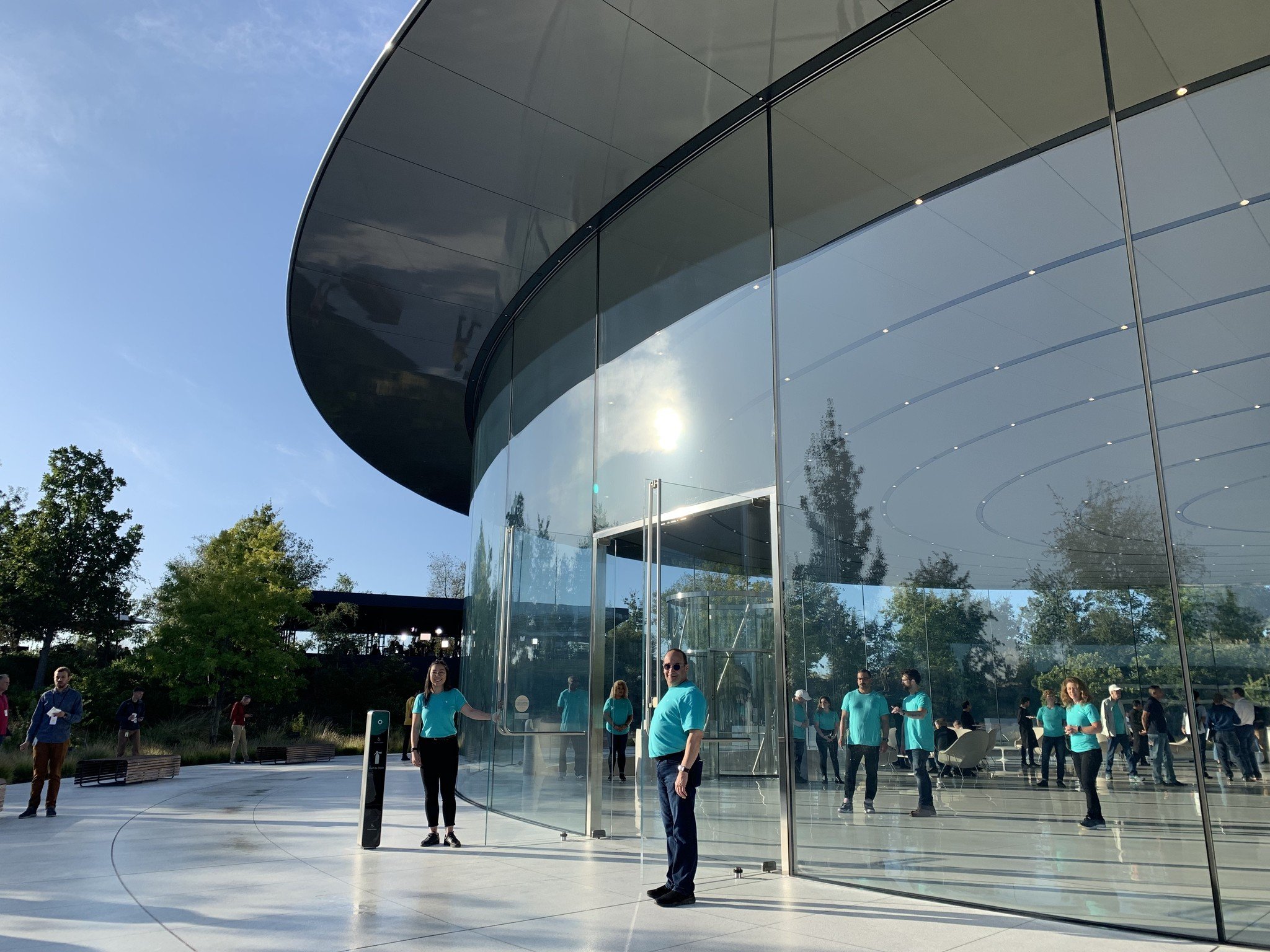My 3 accessibility takeaways from this week's iPhone event

There was an Apple event this week and I was in attendance. Accessibility is core to the company's values, and as such, I expect anything Apple announces to have relevance in some way to the disabled community. Tuesday's event was no different.
'See' is a Big Deal for Representation
As I wrote following the March services event, See is a landmark show in the sense that it makes disability the default. Hollywood typically pits disability as pitiful—the result of an unfortunate event or circumstance. These plot devices, as I wrote, involve the "typical moribund and patronizing approaches" to people with disabilities. It's the so-called "inspiration porn" that many in the disabled community use to describe society's penchant for casting being disabled as an obstacle that must be overcome rather than disability being part of a person's identity.
Disability's representation in film has long been problematic, not only for its use thematically but also for the lack of actual disabled actors playing disabled people. That's why See is so noteworthy. Disability is treated matter-of-factly: the show's premise involves a post-apocalyptic world in which everyone has been blind for centuries and the ability to see is doubted to have ever existed. It's a stark contrast to the usual moribund position.
Most of my friends and colleagues in the media have expressed their apathy towards See, noting that the trailer didn't grab them. It's a fair statement, but it illustrates how I believe there are two truths about the show. Whether it is good as art, as entertainment, is an open question. From my perspective, however, the other truth is just as important. See marks a big step in terms of representation for disability, which is why it has resonated so much with me — and of course, I've never seen an episode. It's, for this reason, I'll watch the pilot when Apple TV+ launches November 1. It also speaks to Apple's institutional love of accessibility that they consulted with blind and low vision people during production so as to accurately portray blindness on the show. (The show's producers and consultants were on hand at the March event.)
Apple Watch Series 5: An (Almost) No-Brainer Upgrade
The banner feature of Apple Watch Series 5, the always-on display, has me sorely tempted to ditch my Series 4 for the new model. It doesn't hurt Series 5 comes in titanium either.
In the four-plus years I've worn an Apple Watch, I've never once complained about having to raise my wrist—or tap the screen—to see the time or notifications. Yet, Series 5's always-on display should alleviate one point of friction for me. The partial paralysis on the right side of my body caused by my cerebral palsy makes it hard, painful even, sometimes to turn my wrist to wake the watch's screen. (I'm left-handed, so I wear my watch on my right wrist.) It isn't a huge deal in the grand scheme of things for me, but it could be for others under similar circumstances. Thus, the Series 5's always-on display should be great for accessibility in this way because you needn't have to contort yourself as much just to see what time it is. Apple is marketing the new display as convenient, but as ever, what's intended as mainstream functionality can prove to be accessible too.
The conundrum I personally face is whether I should upgrade from my year-old Series 4. My year with it has been delightful, thanks to the larger display; it's still going strong and benefits from all the watchOS 6 features. Still, the allure of the new model's always-on display may prove too strong to resist. If it reduces even the tiniest bit of friction in my experience with the device, then upgrading will become a no-brainer based on that alone. For what is widely viewed as a relatively modest update, Series 5 could, in fact, be quite significant in a way not dissimilar to last year's model for accessibility.
Master your iPhone in minutes
iMore offers spot-on advice and guidance from our team of experts, with decades of Apple device experience to lean on. Learn more with iMore!
Is Apple Arcade Accessible?
For me, the big question surrounding Apple Arcade is whether the games will be accessible to disabled people. Accessibility in gaming has historically been quite poor, not only on Apple platforms but others as well. I recognize games are different beasts insofar as they involve mostly completely custom user interfaces that naturally rely heavily on fancy, whiz-bang visuals. These are certainly the types of games Apple is quite literally banking on) for driving adoption of the new service.
In the hands-on area after the event, I spent a couple of minutes playing an Apple Arcade game (I think it was Frogger) on an iPad using an Xbox controller. As someone who has low vision, it was terribly difficult to see where my character was, let alone see what I was doing or where I had to go. Compounding the problem was the controller didn't give me any kind of tactile feedback that I was doing anything. I was blindly, literally so, mashing the buttons with my nose almost touching the tablet's glass screen. It wasn't a fun time, however brief it was.
All of this is to say there is a question of whether Apple and/or developers are working together to make Apple Arcade content accessible to everyone.
These are my general thoughts on Apple's September event this year. I'll have more in-depth analysis on Apple's accessibility with the new iPhone 11 and Apple Watch soon. In the meantime, what did you think of Apple's event? Did anything inspire you? Let me know in the comments.
Steven is a freelance tech writer who specializes in iOS Accessibility. He also writes at Steven's Blog and co-hosts the @accessibleshow podcast. Lover of sports.

